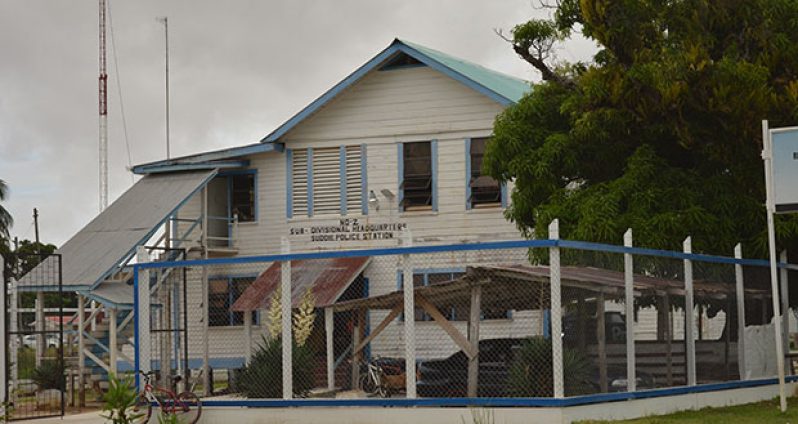THE quiet village of Suddie, once the administrative centre of the Essequibo Coast, has a long history that dates back to the Dutch occupation of Essequibo.Today, a prominent feature of the village is the Suddie Hospital, the main hospital on the Essequibo Coast.

The sprawling hospital complex, which houses a public health building, a health centre and a rehabilitation centre, was built around 1840. Prior to becoming a health centre, it used to house a huge building that overlooked the mighty Essequibo River.
In those days, the building served as a fraternising club for the major estate owners, and they would usually meet there every month end to drink intoxicants or sip coffee while taking in the cool sea breeze and admiring the beautiful shoreline.
According to Isahak Bashir, an elderly resident on the Essequibo Coast, the area that is now called Hamburg Island was located east of, and close to, Suddie; but during a 200-year period, erosion pushed the island some one-and-a-half miles away, and in the process created a beach that was a major resort up until the 1960s. The beach has since been washed away by the Essequibo River.
In the days of the Dutch planters, the plantations owners who used to socialise at the club house reportedly used to relax on the verandah and enjoy the scenery at the beach.
Unlike the other estates on the coast, which produced cotton and sugar, Suddie was known to produce coffee and cocoa.
In 1835, the Portuguese came to these shores from Madeira as a substitute to the slaves, and were distributed to several estates on the Essequibo Coast. About 30 of them were posted to Suddie. They worked on the coffee and cocoa estates, and were also involved in the production of honey; but they were not able to cope with the horrid working conditions, and as a result, many died.
Then Governor of the Essequibo Coast, Henry Lyte, in 1841 established a committee to investigate the living conditions of the Portuguese, and found that they were indeed living under severely harsh conditions, which contributed to the decline in their population.
Over the years, the Portuguese worked hard and developed themselves. Many of them went on to become shrewd business persons. Guan Fernandes, a Portuguese, built the first general store at Maria’s Lodge, Essequibo Coast. Sunny Lord, the Gomeses, the Mendeses and the Bellames are among the prominent citizens who also contributed to the development of the village.
Bashir related that the village is known for the medical services it provides to the Essequibo Coast and Pomeroon. Over the last 60 years, survivors of the generation of elderly persons would be familiar with Dr. Gillette, Dr Whaling, Dr Asregadoo, Dr Muchenagumbo, Dr Gladstone Mitchell; and, more recently, Dr Rama, all of whom have provided yeoman service to the region.

Aside from the hospital, Suddie is home to a post office, a police training school, a magistrate’s court, a High Court, schools, religious institutions, shops, and a police station.
Prominent in the compound of the police station is a mango tree which is said to be over 100 years old. The tree provides shelter for those waiting to see family members or friends who have been admitted to the hospital.
Bashir related that, in years gone by, Amerindians who visited hospitalised relatives would rest under the tree and, on occasions, would miss the bus, but they used to be given shelter by a very kind Portuguese woman named Hilda Ferreira.
Suddie is one of the less rustic villages on the Essequibo Coast, and most of its residents work at the Government offices, while a few engage in cattle rearing aback the village.
Following promulgation of the 1980 Constitution, a regional government system came into being, and Suddie was soon after relieved of being the administrative centre of the region.
Those duties were shifted to Anna Regina, which became a town in 1990.




.jpg)









